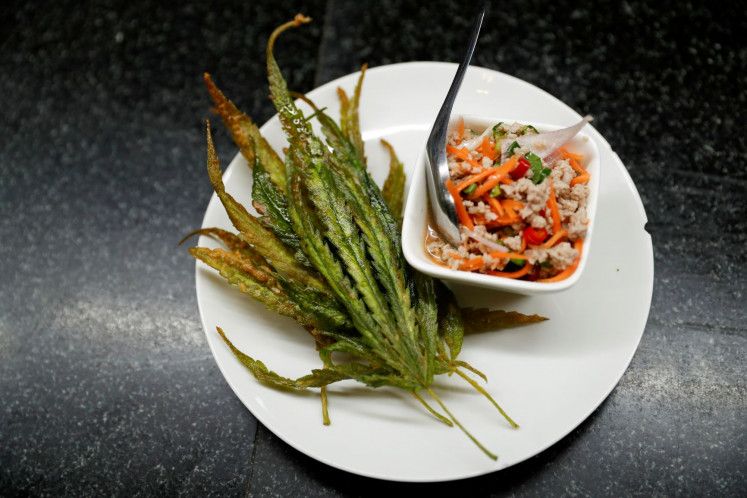
Cooks in Thailand are replacing MSG with cannabis leaf in traditional Thai dishes
Picture over
In the midst of a changing cannabis cultural landscape, Thai restaurants are rediscovering an innovative benefit of using ganja in the kitchen, reports The World of PRI. Chef Amara Akamanon of the rural Baan Lao Ruang (translated “The Storytelling House”) restaurant in Prachinburi uses glutamic acid-rich cannabis leaves for the umami mouthfeel that she gives her dishes – a suitable substitute for monosodium glutamate, or MSG.
(It’s important to note that while the return of the global cannabis cooking legacy is radical, MSG hatred has been exposed, in large part, on the basis of anti-Asian stereotypes, rather than real health issues.)
Baan Lao Ruang has an older customer base who don’t aim high – which is probably best given that THC heavy cannabis is still illegal in the country despite limited medical marijuana regulations. At the same time, the death penalty remains a possible punishment for drug trafficking.
“You might feel lifted by my food,” said Akamanon, who was licensed through an association with an herbal medicine hospital. “Your mood could improve. Maybe you get the giggle. You will relax and sleep better that night. “
What’s weed and on the menu? Akamanon serves “stir-fries, rich curries, tom yum (a classic Thai sour soup) and even tempura-fried cannabis leaves,” according to The World. Some plates are garnished with the recognizable leaves themselves. You can even enjoy tea and passion fruit drink with juicy leaves at Baan Lao Ruang.
Thailand has an impressive heritage as the center of cannabis culture, as anyone familiar with the famous Thai stick ganja from the 1970s and 1980s can tell. In fact, this tradition goes well beyond a specific variety.
Cannabis has been used in traditional medicine for centuries – famous in the kitchens of pork boat noodle vendors who are known to add cannabis leaves to their dishes. Bangkok noodle chain, Rod Dee Ded, proudly adds the stems and roots of the plant to their broth, alluding to owner Sittichan Vuttipornkul’s family cooking traditions.
The plant appears in the country’s first known cookbook, Mae Krua Hua Pa from 1908, in the form of “tender ganja leaves”. The drug became illegal in the country in 1934, largely due to international pressure.
The use of medical cannabis oil by approved health facilities was legalized in the country in 2018. It was the first Asian country to do this. Late last year, the drug was postponed and non-flowering parts of plants with less than 0.2 percent THC were regulated. Additional guidelines on cannabis research, cosmetics and food manufacturing were announced in March, and six plants per household can now be grown at home.
Health Minister Anutin Charnvirakul, a member of the Bhumjaithai party which is part of the political coalition currently in power, has made it a habit to advocate legalization and even pose for photo ops with cannabis plants. He calls the prospect of regulation “a win-win for Thais because they will grow the crop and benefit the economy”.
In April, the conference of the International Medical Cannabis Association took place in the Thai city of Chiang Mai and at the Carlton Hotel in Bangkok. They hosted a 50 vendor cannabis fair to celebrate April 20th.
Akamanon told The World that cannabis has gone from “medicine to a terrible narcotic and back to medicine.” Time will tell where the history of Thai marijuana goes from here.

Post a comment: